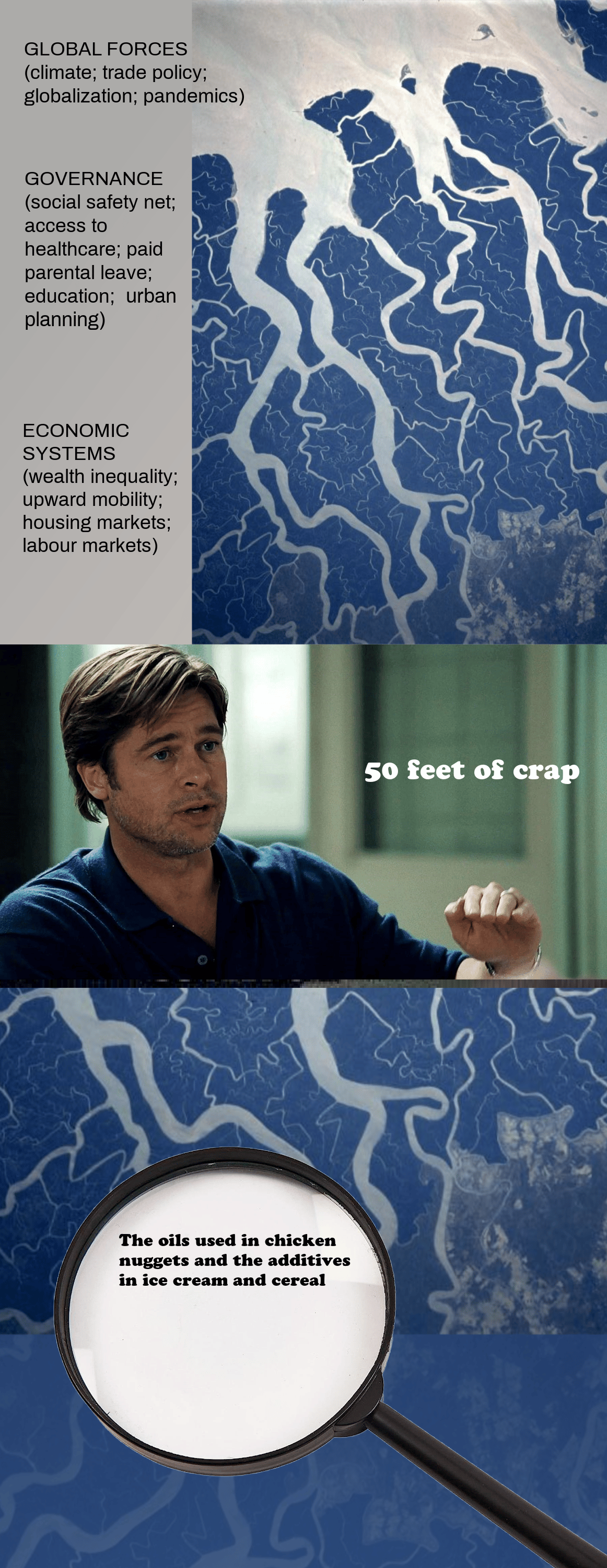- Dad Strength
- Posts
- How to design your workouts
How to design your workouts
Plus: How to think upstream

Today on Dad Strength
No audio edition today. It’s summer, baby!
How to design your workouts
Yesterday, after an energetic evening workout session at Bang, one of our members asked me for advice on how to think about program design. Specifically, about how to choose which exercises go where. I shared two important concepts:
Fatigue-resistant vs. fatigue-sensitive exercises
Top-tier exercises vs. supportive exercises
Fatigue-sensitive exercises tend to require a ton of nervous system activity via coordination and intensity. Explosive and technically-complex movements live here. So, we could be talking about Olympic weightlifting or juggling axes. These typically come early in a workout because they will wilt under fatigue.
Fatigue-resistant exercises might be high-rep work or cardio. Not only do these types of exercises hold up under fatigue, you might get more out of them when you’re less zesty.
Top-tier exercises tend to positively affect many other things. For example, sprinting will contribute to power, lower-body strength, coordination, and a whole stack of sport performance-related skills.
Supportive (AKA accessory) exercises tend to have far less general transfer BUT can zero in improving one aspect of a top-tier exercise. So, while doing calf-raises alone probably won’t transform your athletic performance, the exercise may address a limiting factor in your sprinting work, And if they do, your improved sprinting performance may unleash multiple other downstream effects.
The two categories are related — top-tier exercises tend to be more fatigue-sensitive. So, sequencing your workouts accordingly makes sense. However, think of this as a guideline, not a rule. After 20 years of doing this stuff, I am still regularly surprised at how things that shouldn’t work can be effective.
So, what should you choose for your top-tier exercises? I would look for things that stretch your athleticism by challenging range of motion, coordination and strength/movement speed. If it’s a bit intimidating, that’s a good sign.
Become a master storyteller
My kid likes to spend it as he gets it.
We’ve talked (too much) about three piles of money: savings, charity, and spending for fun. He’s been good with charity and great with spending for fun. A real pro. The savings piece is another story. As a matter of fact, he’s often quite generous. I’ve started to wonder if that’s because generosity is just another way to spend everything ASAP.
Maybe it’s a good sign; that he’s never had to worry about where the next thing coming from — whatever that may be. That perspective is not ideal for adults but… we’ve got some time. So, I started thinking: maybe instead of trying to influence his decisions, I can do a better job of narrating them. By treating everything as a story, I move away from a position of judgment or criticism and closer to simply illuminating the process.
Get the Dad Strength Community Edition
Support Dad Strength for only $5/month AND get periodic bonus resources, like Power Statements for Parents.
Engaged dads benefit from support and community. Curious about our Tuesday calls? Start here.
Don’t get distracted by the downstream stuff
When a health influencer, politician, or anyone, really, wants to distract you from top-tier work, they will draw your attention way downstream. I’m not saying they always do this on purpose but that’s not the point. If you get fixated on a bottom-tier exercise you saw on Instagram or on a downstream policy detail that the result is the same. You waste your time. Everyone’s time, actually.
Downstream solutions are appealing because they help you feel like work is being done. We look busy. Meanwhile, the underlying system remains unchanged It’s all symptoms and no causes — a tremendous bait and switch.
I know I’ve been hammering on RFK Jr.’s fixation on cereal ingredients for a while. It’s not even the worst thing about his platform. But I find it to be the most insidious. That’s because you know he’s lying about vaccines and scientific research. But the cereal thing makes sense. We don’t want nasty additives in our foods.
I made a quick (obviously AI-free) diagram to show you where these policies sit in the global context of health

A systematic review with meta-analysis was published last month. The authors looked at the effect on exercise on depression and anxiety and stated that the data is strong enough to warrant the prescription of exercise for clinical symptoms.
Two things about that:
They do not state that exercise is the only thing you should do — but that it’s part of a comprehensive mental health program
There is no clear winner — from aerobic exercise to strength training. In other words, everything works, so just choose what you are most likely to be able to do. This will be from a combination of practical thinking and pure enjoyment.
What I’m listening to/watching:
A Swim in a Pond in the Rain: In Which Four Russians Give a Master Class on Writing, Reading, and Life by George Saunders
A quote
“I don't think much new ever happens. Most of us spend our days the same way people spent their days in the year 1000: walking around smiling, trying to earn enough to eat, while neurotically doing these little self-proofs in our head about how much better we are than these other slobs, while simultaneously, in another part of our brain, secretly feeling woefully inadequate to these smarter, more beautiful people.”
A dad joke
My new thesaurus is terrible. Not only that, but it's also terrible.
Geoff Girvitz
Father, founder, physical culturist
dadstrength.com